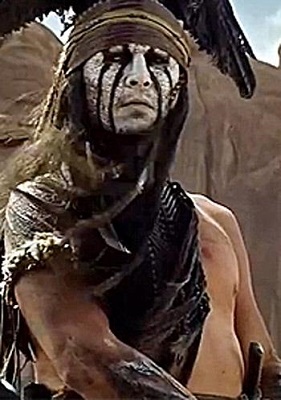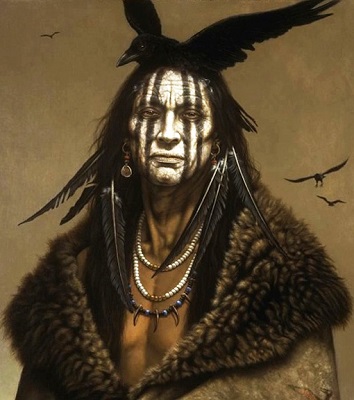 |
| The Fourth Horseface of the Apocalypse |
Talking heads have largely elided how utterly predictable this outcome really was. We’ve seen this arc with too many girls who underwent adolescent turmoil under public scrutiny. When our cherubic foster daughter outgrows her cute stage and demands her autonomy, especially in sexual terms, fans balk. Professional handlers shanghai the developmental stage where a girl gets to know herself. And she hits adulthood with a woman’s libido and a girl’s self-image.
Though details vary, the path never ends well for the girl. Modern society’s mix of celebrity acclaim and resistance to change create an unholy stew that inhibits normal development. Sometimes the results are tragic, as when Dana Plato descended from TV stardom to porn videos to an early, drug-induced death. Sometimes it’s more lachrymose, like Jodie Sweetin’s slow public self-destruction. But it’s always trite, and always wholly preventable.
Preventable, because we understand the stages of youth. We understand that, as our daughters approach adulthood, they resist our influence and experiment with identities like they formerly tried on hats. Brief ventures into emo culture or skater punk turn countless dads grey, but we recognize these youthful stages for the personal exploration they are. Sure, we try to keep girls young forever; but we revel when they find the women they’re meant to become.
 |
| Paris Hilton and Britney Spears. 'Nuff said. |
In fairness, we’re not always offended by teenage sexuality. Take Britney Spears or Amanda Bynes, who both went from coltish child stars to sexual goddesses with whiplash speed. But both stars’ subsequent public freakouts bespeak why hastening adulthood does as much harm as postponing it. These girls had identities handed to them by parents, managers, and focus groups. They never had any chance to become themselves.
Some girls go to the opposite extreme—or, more likely, get pushed there by adults who should know better. Leann Rimes’ first music video featured her lounging like a poolside temptress, at an age when most girls still have a favorite stuffed bear. Early album covers highlighted her precocious figure, presenting her as a grown woman and casual tease. Her handlers forced her to become a woman when she was still a girl.
I cringed at Rimes’ early appearances, warning friends that Tanya Tucker started similarly. By age twenty, Tucker had multiple substance abuse problems, and after her comeback, became more famous for her liaisons and out-of-wedlock pregnancies than her music. Friends assured me that Rimes need not follow Tucker’s dark path, and I relented. Then Rimes celebrated turning eighteen by posing for magazine covers with her blouse off. Very mature.
Sadly, many girls—actresses, mainly—think appearing topless equals coming of age. Elizabeth Berkley’s high-profile burnout in Showgirls did not stop other former child stars, like Anne Hathaway, Reese Witherspoon, and Mischa Barton, from equating nudity with adulthood. Some, like Natalie Portman and Denise Richards, combined nudity with taboo sex. Most have seen their star power suffer; Barton, Richards, and Berkley haven’t gotten star billing for years.
 |
| Maxim Blender splashed this image of Leann Rimes on their cover, with the appalling caption: "ALL GROWN UP!" |
Cyrus need not follow the familiar path of rehab, divorce, and reality TV. Many former child stars avoid this trap: the Lennon Sisters, Danica McKellar, and Kirsten Dunst come to mind. These girls received sound personal and professional advice, even when, like the Lennons, they endured protracted public childhood. Good guidance could steer Cyrus to a fulfilling adult career. But she will have to stop submarining herself first.

 At least theoretically, China remains a command economy, in which the state owns all land, and every transaction requires state permission. Yet Beijing’s benign neglect of nominally agricultural areas has permitted “farmers” remarkable local autonomy. Many have responded by turning their patches into low-rent housing, essentially creating modern suburbs. If the Party notices such use, though, “farmers” risk land expropriation: don’t get too successful, or you’ll lose everything.
At least theoretically, China remains a command economy, in which the state owns all land, and every transaction requires state permission. Yet Beijing’s benign neglect of nominally agricultural areas has permitted “farmers” remarkable local autonomy. Many have responded by turning their patches into low-rent housing, essentially creating modern suburbs. If the Party notices such use, though, “farmers” risk land expropriation: don’t get too successful, or you’ll lose everything. Every few years, the conventional carp about America’s Senate arises anew, that its inflexible apportionment of two Senators per state, regardless of population, subverts American democracy. How can we claim small-d democratic principles when Wyoming, population barely half a million, has the same representation as California, numbering over thirty-eight million? Can two Jewish women from Frisco really represent all California interests?
Every few years, the conventional carp about America’s Senate arises anew, that its inflexible apportionment of two Senators per state, regardless of population, subverts American democracy. How can we claim small-d democratic principles when Wyoming, population barely half a million, has the same representation as California, numbering over thirty-eight million? Can two Jewish women from Frisco really represent all California interests?


 Readers familiar with FMX will recognize that Link somewhat oversells his influence. Long before he snubbed his sponsors, riders like Bob Kohl and Travis Pastrana were performing trick rides on dirt tracks. Many riders pilfered BMX stunts, though they reserved their theatrics for warm-ups and victory laps. Link didn’t so much invent FMX as demonstrate that freestyling, essentially motorcycle ballet, could revitalize jaded audiences and draw sponsors.
Readers familiar with FMX will recognize that Link somewhat oversells his influence. Long before he snubbed his sponsors, riders like Bob Kohl and Travis Pastrana were performing trick rides on dirt tracks. Many riders pilfered BMX stunts, though they reserved their theatrics for warm-ups and victory laps. Link didn’t so much invent FMX as demonstrate that freestyling, essentially motorcycle ballet, could revitalize jaded audiences and draw sponsors.
 Massive investments in petroleum-burning equipment, genetically modified seed, chemical fertilizers and pesticides, and other high-tech gadgetry massively multiply yield. Yet plentiful yields, like anything plentiful, fetch less money. To bolster prices, America ships excess crops overseas as “food aid,” undercutting prices in poor countries with primarily agrarian economies. We’ve globalized poverty among dirt farmers.
Massive investments in petroleum-burning equipment, genetically modified seed, chemical fertilizers and pesticides, and other high-tech gadgetry massively multiply yield. Yet plentiful yields, like anything plentiful, fetch less money. To bolster prices, America ships excess crops overseas as “food aid,” undercutting prices in poor countries with primarily agrarian economies. We’ve globalized poverty among dirt farmers.



 Moments like these, mother helping father downstairs, mother changing father’s diaper, mother helping father eat soup—anyone who’s ever eased a loved one through dementia will recognize these moments. But Gillman keeps them personal. This isn’t about some woman helping some man; these are two people who, stripped of burdens like names, exist purely in each other’s light, becoming whole in how they relate to each other.
Moments like these, mother helping father downstairs, mother changing father’s diaper, mother helping father eat soup—anyone who’s ever eased a loved one through dementia will recognize these moments. But Gillman keeps them personal. This isn’t about some woman helping some man; these are two people who, stripped of burdens like names, exist purely in each other’s light, becoming whole in how they relate to each other.
 But overall, Myers doesn’t quote those he refutes. He presents straw-man arguments about some conveniently nameless theist, or he caricatures specific opponents’ beliefs. It’s like watching Fox News misrepresent the Democratic Party, or hearing Fred Phelps mock gays and secularists. Audiences wonder: why would anybody believe such claptrap? Reality replies, nobody really believes that burlesque. Nobody worth your energy, anyway.
But overall, Myers doesn’t quote those he refutes. He presents straw-man arguments about some conveniently nameless theist, or he caricatures specific opponents’ beliefs. It’s like watching Fox News misrepresent the Democratic Party, or hearing Fred Phelps mock gays and secularists. Audiences wonder: why would anybody believe such claptrap? Reality replies, nobody really believes that burlesque. Nobody worth your energy, anyway.



 But modernity contains the seeds of its own downfall: it’s built on flimsy foundations that will burn bright when the right people strike the spark. As Saba becomes the leader she needs to be, she finds that power means setting aside her own prerogatives. Hostility gives way to trust, and trust paves the road to revolution. If Saba wants to free the slaves and challenge the King in his domain, she cannot do so alone.
But modernity contains the seeds of its own downfall: it’s built on flimsy foundations that will burn bright when the right people strike the spark. As Saba becomes the leader she needs to be, she finds that power means setting aside her own prerogatives. Hostility gives way to trust, and trust paves the road to revolution. If Saba wants to free the slaves and challenge the King in his domain, she cannot do so alone.
 Not only must readers believe this, so must the cops. Because they believe such unbelievable precepts, they permit their prime suspects one full day’s head start. When Dub and T-Tommy finally decide to pursue their real quarry, they grasp at straws so desperately that they lay themselves open to barefaced manipulation. Their investigation quickly devolves into a comedy of errors.
Not only must readers believe this, so must the cops. Because they believe such unbelievable precepts, they permit their prime suspects one full day’s head start. When Dub and T-Tommy finally decide to pursue their real quarry, they grasp at straws so desperately that they lay themselves open to barefaced manipulation. Their investigation quickly devolves into a comedy of errors.
 Dreamer counts as science fiction only in the broadest possible sense, a speculation on the nature of comprehensible reality and the evidence of our senses. The contrast between the banality of Greg’s life and the excitement of his dreams, and the possibility that some outside force has upended this equilibrium, makes for darkly hypothetical philosophy. And Quinn dares ask: why do we just assume we’re awake?
Dreamer counts as science fiction only in the broadest possible sense, a speculation on the nature of comprehensible reality and the evidence of our senses. The contrast between the banality of Greg’s life and the excitement of his dreams, and the possibility that some outside force has upended this equilibrium, makes for darkly hypothetical philosophy. And Quinn dares ask: why do we just assume we’re awake?